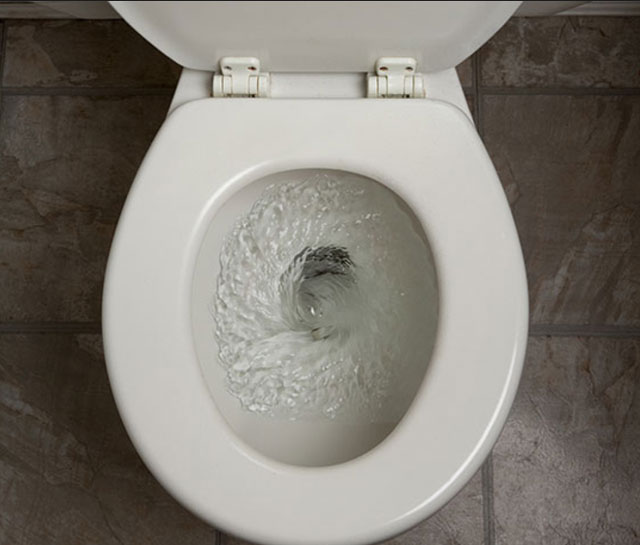
Kampala, Uganda | THE INDEPENDENT | Only 6 percent of household toilets in Kampala are connected to the sewerage network.
According to the Kampala Capital City Authority-KCCA Sanitation Improvement and Financing Strategy, there are only a mere 8,975 active sewer connections in Kampala. Of these, 8,375 were connected by 2015 and 120 connections added annually since then.
The number represents only 6 percent of the total 147,232 household toilets that KCCA says are in Kampala.
According to KCCA Sanitation Improvement and Financing Strategy, the reasons for low connection rate include low willingness to connect due to high cost of connection to sewerage services, high cost of sewerage charges and the fact that there are already existing toilets which is cheaper to maintain.
Now KCCA through its Sanitation Improvement and Financing Strategy is seeking to extend the sewer network to cover about 1.4 million of Kampala’s total population. The plan is to work with National Water and Sewerage Cooperation –NWSC to increase coverage based on sewerage densification plan and improved compliance by customers to ensure all are connected.
KCCA’s Sanitation Improvement and Financing Strategy is a ten year plan to be implemented from 2021 to 2030. The 271.7 million US Dollars (approximately Shillings 990.7 billion) fund is a guide to city-wide planning and investment in sanitation.
The authority wants to provide equitable and universal access to improved sanitation and hygiene and safe management of faecal sludge and sewerage along the entire sanitation chain in Kampala by the year 2030. KCCA plans to spend 72.9 million US Dollars (Approximately Shillings 265.8 billion) to improve containment of faecal sludge, 160.4 million US Dollars (Approximately Shillings 584.8 billion) to improve faecal sludge collection and sewerage networks, 36.4 million US Dollars (Shillings 132. 7 billion) to boost treatment capacities of faecal sludge and wastewater and 7.2 billion Shillings on “cross-cutting costs”.
According to the plan, KCCA shall improve containment by ensuring there are quality toilets in households, KCCA health facilities, schools and public toilets across the five divisions of Kampala.
“The campaign will focus on among others, hygiene and handwashing with soap practices, regularisation of pit emptying practices and links to service providers, proper use and maintenance of shared toilet facilities, appropriate solid waste management practices, and popularisation of the Sewage and Faecal Sludge Management Ordinance and KCCA minimum standards” reads the plan in part.
The Director of Public Health at KCCA, Dr. Daniel Okello recently revealed that one percent of Kampala population still practice open defecation. One of the challenges identified is that the cost of constructing a minimum standard latrine is expensive for most households in Kampala. Construction cost is estimated at 3 million Shillings. Also, 50% of Kampala’s population is using shared sanitation facilities according to KCCA.
The authority plans to construct about 92,000 toilets to improve household sanitation. Jude Byansi, the KCCA manager Water and Sanitation says they shall work with Local Council One committees to identify households that need toilets.
KCCA is also partnering with organisations like Water for People to deliver the service. Byansi explains that the Authority shall work with banks like Post Bank to avail low interest loans subsidised by the authority to have the toilets constructed. Households shall therefore be encouraged to get the low interest loans to get the job done. The target is to increase access to quality sanitation facilities and reduce the rate of toilet sharing.
KCCA also wants to improve faecal sludge collection whose collection efficiency they say stands between 60.9 percent and 75.9 percent. The rest of the sludge KCCA says is either buried onsite, or the toilets are abandoned on filling or illegally emptied into the environment during heavy rains.
“Majority of cesspool Emptiers provide services to high and mid income areas, and some low-income areas with easy access. Semi mechanized emptying (Gulpers) are a promising option for low-income areas, but face challenges with higher operation and transport cost (traffic jams) affecting costs.” reads the document in part.
The market rate of emptying a pit latrine is Shillings 100,000 for one cesspool trip, which is 4000 liters. This is deemed expensive by low-income households.
Judee Byansi, the KCCA Manager for Water and Sanitation also says that they shall continue with the Weyongye project that they have been implementing through community agents who sensitize the public about sanitation behavior as well us organize communities to clean their areas among other practices.
******
URN
 The Independent Uganda: You get the Truth we Pay the Price
The Independent Uganda: You get the Truth we Pay the Price



